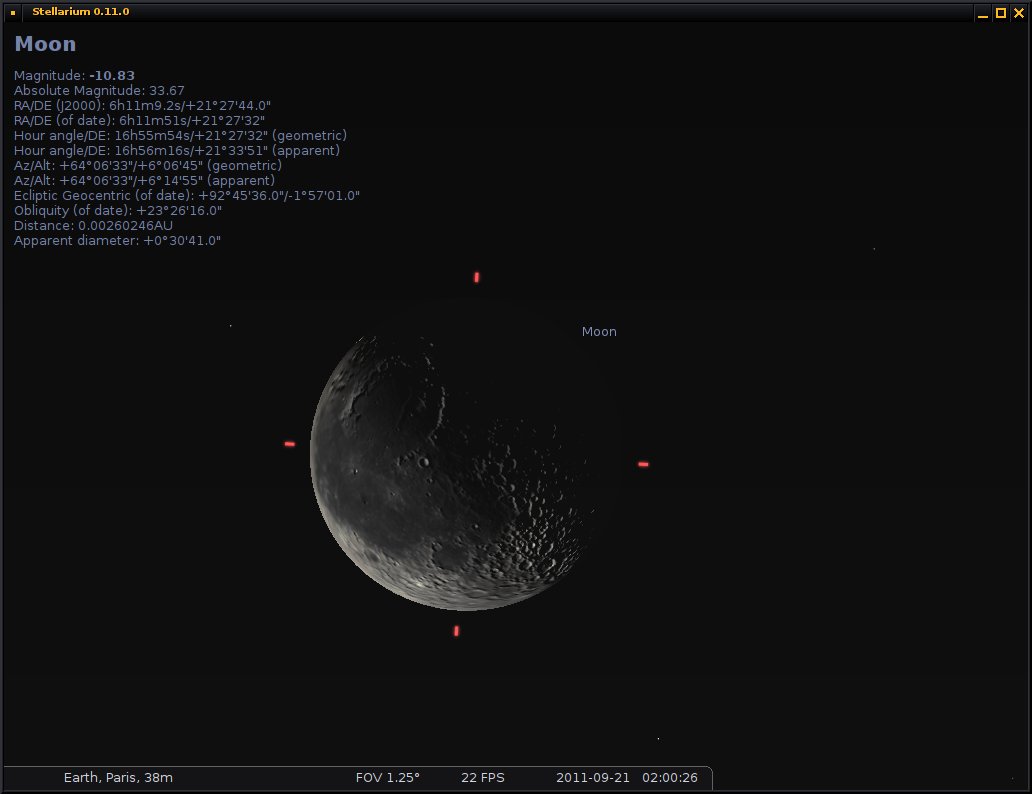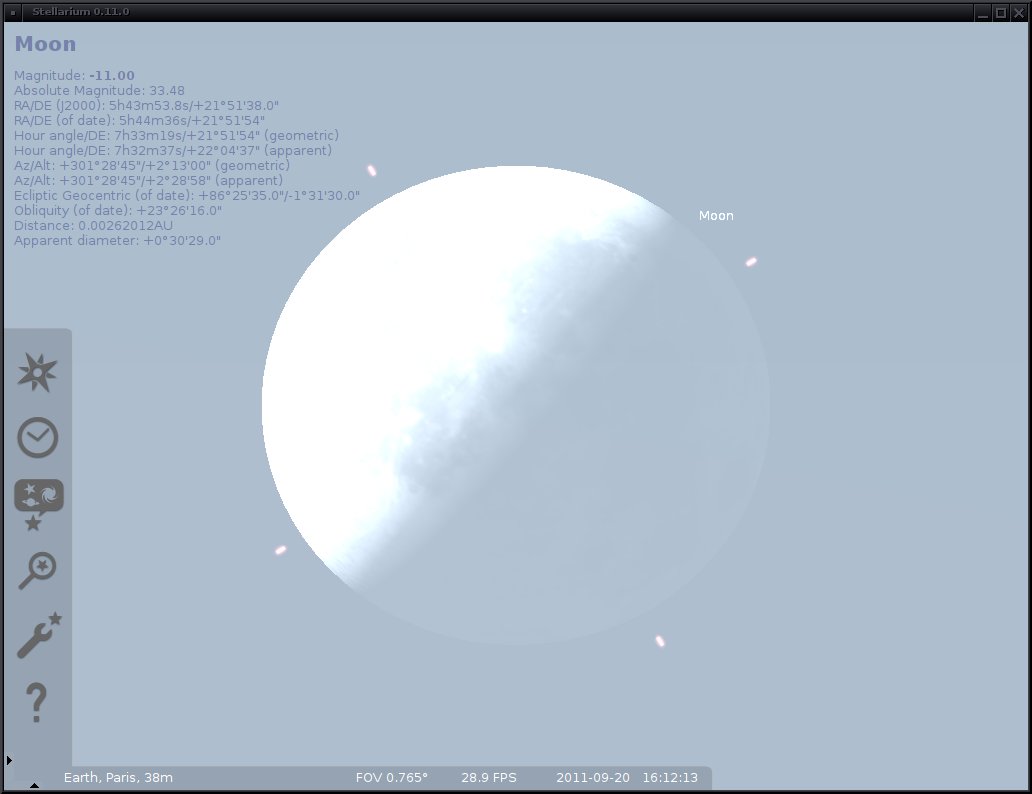As part of the ESA Summer of Code in Space 2011 I improved Stellarium planet rendering (here is a previous post on the project).
More specifically, the following features were added:
1) Procedural perlin noise (fBm) clouds.
2) Bump mapping with normal maps.
The improved rendering code is implemented with GLSL shaders, and requires shader model 3.0 capable graphics hardware.
The following video that shows the effects… (It looks slow because of bad recording, the effects don’t have any impact on Stellarium performance). But you can see the bump mapping and the clouds! 🙂
Many thanks to the Stellarium development team and the ESA SOCIS organization team for giving me the opportunity to participate in the project! 🙂




